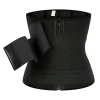Day Care Snacks Lacking in Nutritional Value
Study indicates snacking is a “missed opportunity”
by Kathy Francis
From animal crackers to gummy fruit snacks and calorie-laden juice drinks, kids in child care are not getting the nutrition they need from daily snacks, according to a new study from Cincinnati Children’s Hospital Medical Center published online in the journal Childhood Obesity.
The study – the first of its kind to compare meals to snacks – shows that despite efforts to improve the diets of children in child care settings, meals – and particularly snacks – still lack nutritional quality. Snacks, while smaller than meals, are an integral part of preschool-aged children’s diets, typically comprising 26 percent of their daily calorie intake.

Researchers from Cincinnati Children’s reviewed menus at 258 child care centers in southwestern Ohio, analyzing the average weekly frequency for servings of fruits, vegetables, lean meats, juice (100 percent) and sweet or salty foods. They found that the composition of lunches differed from snacks in all food categories.

Fruits, vegetables and meats were rarely included in snacks, but were listed almost daily as a component of lunches. Conversely, 87 percent of centers served sweet and salty foods – such as gummy snacks, pretzels and crackers – at snack time more than three times per week, but rarely at lunch.

The study also found that:
87 percent of centers rarely listed non-starchy vegetables for snacks, but 67 percent included them at lunch more than three times per week.
100 percent fruit juice was listed as a component of snack at least three times per week in over a third of the centers surveyed, but rarely with lunch.
60 percent of the centers reported serving 2 percent milk to children older than age three; 31 percent served whole milk.
“Snack time for kids is a missed opportunity,” said Kristen A. Copeland, MD, from the Division of General and Community Pediatrics at Cincinnati Children’s and the study’s lead author. “With some 75 percent of kids ages 3–5 in child care, revising the types of foods and beverages served at snacks in child care may be a way to address the growing obesity problem.”

The USDA is expected later this month to release new guidelines for meals and snacks served in child care programs under the Child and Adult Care Food Program. These guidelines are expected to call for increased variety in the types of beverages and foods served at snack times among participating programs, and specifically including more fresh fruits and vegetables and meat or meat alternatives as snacks.
“Our findings suggest that these guidelines would represent a sharp departure from what is typically served in these programs at snack times, which for centers in our study was typically juice and a refined grain such as crackers,” said Dr. Copeland.

“We may need to think about the messages we are teaching children by serving these types of foods at snacks. If bitter-tasting vegetables are reserved for meals, but snacks are filled with tasty crackers and sweets, it’s no wonder that children may start to prefer to eat at snack times rather than meals.”
“Theoretically, there is no reason for the nutritional value of snacks to differ from lunches,” said Dr. Copeland.

Highlighting others’ research that shows that the preschool years are a time for establishing eating habits, she said, “Parents and child-care providers play an important role in shaping the eating habits and food preferences of young children. We might want to rethink how we’re looking at snacks, both as a source of nutrition and for promoting healthy eating habits.”
The information contained in this article is for educational and informational purposes only and is not intended as health or medical advice. Always consult a physician or other qualified health provider regarding any questions you may have about a medical condition or health objectives.





